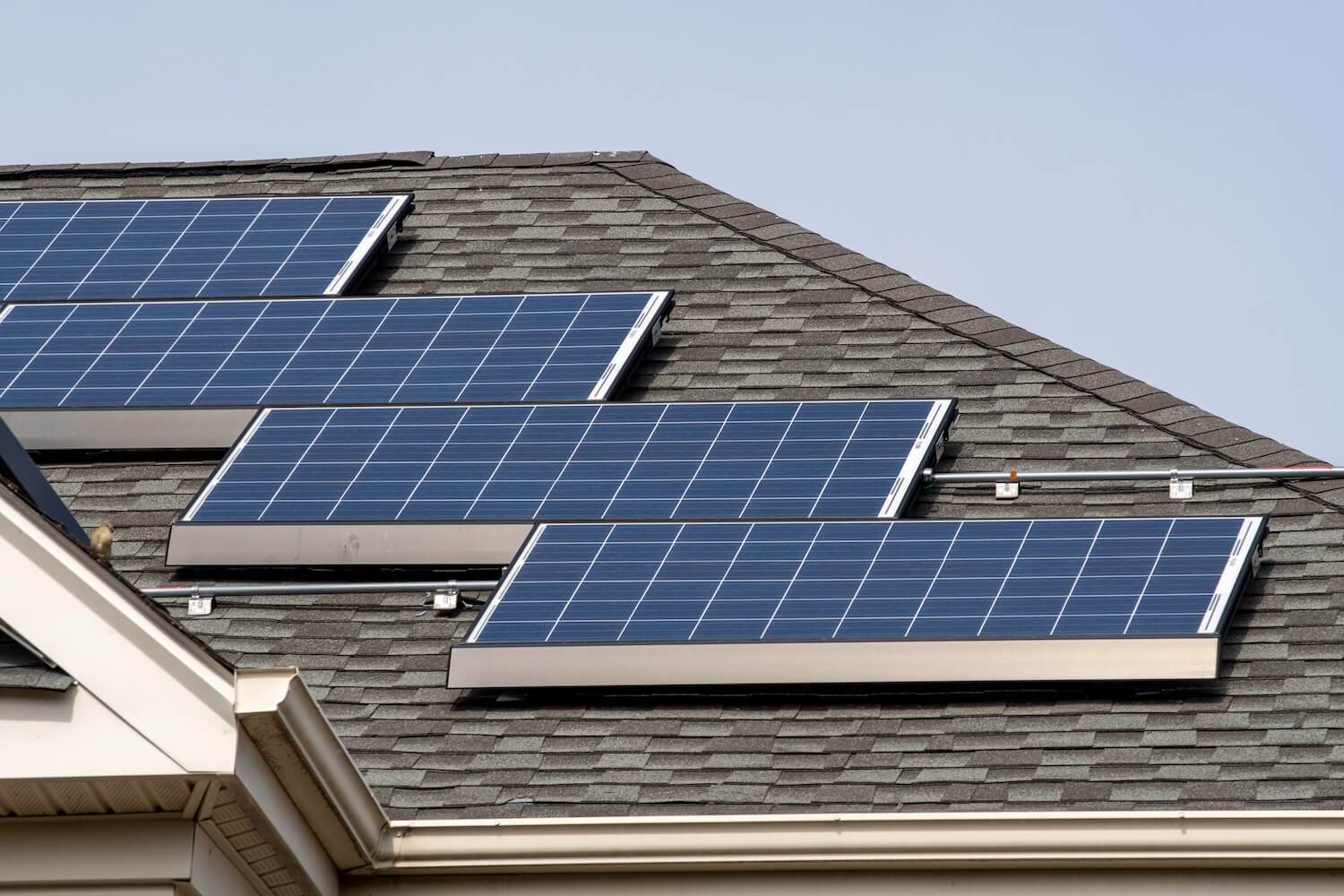The sun, a seemingly endless source of clean energy, beckons homeowners with the promise of reduced electricity bills and a smaller carbon footprint. Solar panel installations have surged in popularity, transforming rooftops into power-generating hubs. However, amid the excitement of embracing renewable energy, a critical first step often gets overlooked: ensuring your roof is not just adequate, but optimally prepared for the long-term commitment of supporting solar panels. Skipping this crucial pre-installation roofing prep can lead to significant headaches, unexpected costs, and even compromise the effectiveness of your solar investment down the line. This isn’t just about a quick once-over; it’s about getting professional roofing services for comprehensive inspections, necessary repairs, and potentially even a re-roofing, all before the solar crew ever sets foot on your property.

The Critical First Step: Professional Roof Inspection
The initial, and perhaps most crucial, step in proper roofing preparation is a professional roof inspection. This is not the cursory glance you give your roof from the ground, nor is it the quick assessment a solar installer might perform to ensure basic structural integrity. You need a dedicated, experienced roofing professional to conduct a thorough, detailed inspection. Their expertise goes far beyond what a general contractor or even a solar sales representative might offer.
What a Professional Roof Inspection Entails
A truly comprehensive roof inspection involves a methodical examination of every component of your roofing system. This isn’t just about spotting obvious damage; it’s about identifying subtle indicators of deterioration, potential weak spots, and underlying issues that could be exacerbated by the presence of solar panels.
- Shingle and Material Assessment: The roofer will meticulously examine every shingle, tile, or metal panel for signs of wear, cracking, blistering, cupping, curling, or missing pieces. Even seemingly minor cracks can become major entry points for water once panels are installed and the roof is subjected to increased thermal expansion and contraction.
- Flashing and Penetration Inspection: Flashing – the thin pieces of metal installed around chimneys, vents, skylights, and other roof penetrations – is a common culprit for leaks. The inspector will ensure all flashing is securely in place, free from corrosion, and properly sealed. Any gaps or signs of deterioration here are red flags.
- Gutter and Downspout Evaluation: While not directly supporting the panels, properly functioning gutters and downspouts are vital for directing rainwater away from the roof and foundation. The inspector will check for blockages, proper slope, and secure attachment, as clogged gutters can lead to water pooling on the roof, accelerating wear.
- Roof Decking and Underlayment Assessment: A professional will also assess the integrity of the roof decking (the plywood or OSB sheeting beneath the roofing material) and the underlayment (the waterproof barrier). They will look for signs of sagging, rot, or delamination, which can indicate water damage or structural weaknesses that need addressing before any weight is added to the roof.
- Attic Inspection: A critical component of a thorough roof inspection involves venturing into the attic. Here, the roofer can look for signs of water stains, mold, mildew, or rot on the underside of the roof deck, rafters, and insulation. These are clear indicators of existing leaks or persistent moisture problems that must be remedied. They will also assess attic ventilation, as proper airflow helps regulate temperature and prevent moisture buildup, extending the life of the roof.
Assessing Roof Age and Remaining Lifespan for Installing
Beyond just identifying visible damage, a professional inspection involves assessing the age of your roof and its remaining lifespan. Even if your roof appears to be in good condition, an older roof nearing the end of its projected life may not be the ideal candidate for a solar panel installation. Most asphalt shingle roofs, for example, have a lifespan of 20-30 years. If your roof is already 15-20 years old, installing solar panels on it means you’ll likely face the dilemma of needing a full roof replacement while the panels are still under warranty and actively producing power.
Imagine installing brand new solar panels on a roof that has only five to seven years of life left. In a few years, you’ll be faced with the substantial and disruptive cost of removing the panels, re-roofing, and then reinstalling them. A professional roofer can provide an accurate estimate of your roof’s remaining lifespan, allowing you to make an informed decision about whether a repair or a full replacement is the more prudent course of action. This foresight can save you thousands of dollars and immense frustration down the line.
Addressing Issues: Roof Repairs and Re-Roofing
Once the comprehensive inspection is complete, the next logical step is to address any identified issues through professional roof repairs or, in more extensive cases, a full re-roofing. Ignoring these issues can lead to severe consequences once solar panels are installed.
The Importance of Timely Roof Repairs
Even minor issues, if left unaddressed, can escalate into significant problems once solar panels are in place. A small crack in a shingle, for instance, might not seem like a big deal now, but under the weight and constant presence of solar panels, and exposed to years of weather, it can expand, allowing water to seep in and cause damage to the underlying structure.
- Preventing Leaks: The primary goal of repairs is to prevent leaks. Solar panel mounting systems require penetrations into the roof surface. While installers use flashing and sealants, these are only as effective as the integrity of the underlying roof. If there are existing weaknesses, these penetrations can become pathways for water.
- Structural Integrity: Repairs ensure the roof can adequately support the added weight of the solar panels and their mounting hardware. While panels are not excessively heavy, their cumulative weight, especially across a large array, combined with wind and snow loads, requires a structurally sound roof.
- Accessibility and Cost-Effectiveness: These seemingly minor repairs are far easier and less expensive to undertake before solar panels are installed. Trying to repair them after installation can be incredibly challenging, requiring the temporary removal of panels or working in confined spaces, both of which add significant complexity, labor, and material costs. Imagine paying a solar crew to remove panels just so a roofing company can fix a shingle – a cost you could have entirely avoided.
When Re-Roofing Becomes the Smart Choice Before Installation
Beyond simple repairs, there’s the consideration of re-roofing. This is perhaps the most significant, and often most overlooked, aspect of roofing prep. If your roof is nearing the end of its life, or if it has extensive damage that makes repairs impractical or cost-prohibitive, a full re-roofing prior to solar panel installation is almost always the most economically sound and strategically wise decision.
- Long-Term Investment Protection: While the upfront cost of a re-roof can seem substantial, it’s a long-term investment that safeguards your much larger solar investment. A new roof ensures a fresh, durable, and reliable surface for your solar panels for their entire lifespan. It eliminates the worry of needing to replace the roof prematurely and the associated disruption and expense of removing and reinstalling your solar array.
- Enhanced Durability and Performance: A new roof provides a pristine surface for the solar mounting system, allowing for optimal attachment and long-term stability. This can contribute to the overall performance and longevity of your solar system by providing a solid foundation.
- Extended Warranties: Moreover, many reputable roofing companies offer extended warranties on new roof installations, providing an additional layer of protection for both your roof and, indirectly, your solar panels. This can be a significant advantage if any issues arise with the roof materials or workmanship down the road.
- Opportunity for Material Upgrades: When considering a re-roofing project before solar installation, it’s also an opportune time to think about materials. While asphalt shingles are common, some homeowners might consider other roofing materials like metal or tile, which can offer increased durability and a longer lifespan, potentially outlasting even the solar panels themselves. Metal roofs, for example, can last 40-70 years, making them an excellent choice for solar integration. Discussing these options with your roofing professional can help you choose the best material for your specific needs and budget, ensuring maximum longevity and minimal maintenance.
Beyond the Obvious: Indirect Benefits of Roofing Prep
The impact of professional roofing services before solar panel installation extends beyond just preventing leaks and saving money on future repairs. It also plays a vital role in optimizing the performance of your solar system and providing peace of mind.
Optimizing Solar System Performance
A healthy, well-maintained roof provides a stable and secure platform for the mounting hardware, ensuring that the panels are correctly aligned and positioned for maximum sun exposure.
- Stable Mounting: Any structural weaknesses or unevenness in the roof can lead to improper panel installation, reducing efficiency and potentially even causing damage to the panels themselves over time due to uneven stress.
- Preventing Shading and Debris: Furthermore, a clean, well-drained roof helps prevent debris accumulation (leaves, dirt, pine needles), which can shade panels and diminish their output. A roof in good repair is less likely to shed granular material from old shingles onto the panels, keeping them cleaner and more efficient.
Protecting Your Warranties and Insurance
Another often-underestimated benefit of proactive roofing prep is related to warranties and insurance. This aspect is crucial for protecting your substantial investment in solar.
- Maintaining Solar Panel Warranties: Many solar panel manufacturers and installers require that the roof be in good condition to uphold their warranties. If a roof issue leads to a problem with your solar system, and you neglected professional roofing services before installation, you might find your warranty voided. For example, if a compromised roof structure causes a panel to crack due to improper support, the manufacturer might deny a warranty claim.
- Home Insurance Coverage: Similarly, home insurance policies may have clauses related to roof condition. An old, failing roof might not be fully covered for certain types of damage, and if solar panels exacerbate a pre-existing roof issue, your claim could be denied or reduced. A professionally inspected and repaired or replaced roof provides peace of mind and ensures that you are fully covered in the event of unforeseen circumstances like storm damage that affects both your roof and your solar array.
Power Conclusion: A Sound Foundation for a Bright Future
The allure of solar energy is powerful, and the benefits are undeniable.
However, a successful and long-lasting solar installation hinges on a solid foundation: your roof. Don’t fall into the trap of rushing into solar panels without first ensuring your roof is in optimal condition.
Invest in professional roof inspections, address all necessary repairs, and seriously consider a re-roofing if your existing roof is nearing the end of its life. While it may seem like an additional upfront cost, this proactive approach to roofing preparation is an investment that will save you significant time, money, and headaches in the long run.










